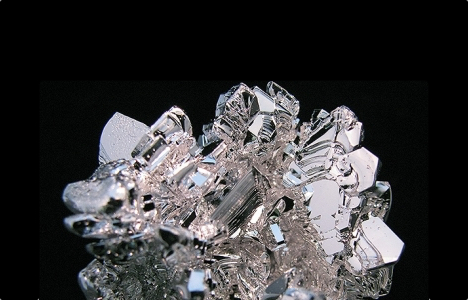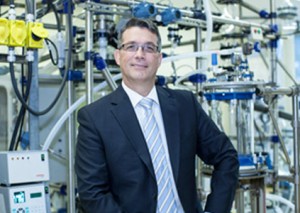
Alliance Magnesium Inc. recently signed the final contract for a C$3 million non-repayable grant, which will be implemented in the construction of a primary magnesium facility in Quebec, Canada. Concurrently with the signing of the agreement with Sustainable Development Technology Canada (SDTC), the Corporation has received the first installment of C$1.27 million.
Pilot Facility
Alliance Magnesium started up a pilot plant in Quebec, Canada, in May 2015 to demonstrate a patented electrolytic process powered by hydroelectricity to convert serpentine tailings from defunct asbestos mining operations in Quebec. Many years of chrysotile-asbestos mining in the region resulted in high volumes of serpentine rock tailings with 23.3% magnesium-oxide content. Alliance estimated the region has 800 million metric tons of serpentine tailings available as raw material.
The serpentine rock tailings Alliance Magnesium plans to utilize will be from the residue of the former Jeffrey mining operation in Asbestos Town, Quebec. “The mining operations have generated huge tailings of residual serpentine over the past decade,” Dr. Joel Fournier, president and CEO of Alliance Magnesium told Light Metal Age. “Those tailing, already extracted and crushed, will be the raw material for our production. The AM process destructs any potential residual fiber into the material and return only a few amount of unused inert material to the tailing. Our operation constitutes a remediation of this area.”

He added, “Serpentine rock is essentially composed of 40% magnesium oxide and 50% inert silica, plus various other minor elements (iron oxide, nickel oxide, etc.). By a simple low temperature hydrochloric acid leaching of this material, you can obtain a concentrated brine of magnesium chloride because the silica remain insoluble in the acid and could be easily removed from the brine. After purification, this brine is dry to obtain a prill and send to electrolysis for metal production. Due to the high concentration in magnesium of the raw material, the preparation and purification steps are limited.”
The C$10-million pilot plant was installed on the site of the former Magnola plant through an agreement with Magnola Metallurgy Inc. and Magnola Mining Inc. (both subsidiaries of Glencore Canada. The agreement provides access to the industrial facilities of a defunct magnesium smelter as well as to the raw materials on that site for its demonstration unit. Provincial officials in Quebec awarded an interest-free loan for $2.25 million for the pilot plant project.
The pilot facility is the first step in the development of commercial-scale production of primary magnesium from serpentine tailings.“We are very happy to benefit from this exceptional site for our starting pilot operations, which will, in a few years, lead in the commercial production of 50,000 tonnes of magnesium and other high-value mineral products,” said Fournier. Demonstration activities were projected to last 14 months, with the first phase of commercial production expected to being in 2017.
Dr. Joel Fournier gave a presentation on the Alliance Magnesium project at the Global Automotive Lightweight Materials in August 2014.
New Primary Magnesium Technology
The company has developed a new demonstration technology, a “clean” electrolytic process that would be a viable alternative to the Pidgeon process that is prevalent in China’s magnesium industry, the world’s main source of primary magnesium. The Pidgeon process is sometimes said to be one of the most critical sources of CO2 and SO2 emissions because of its heavy dependence on coal-fired electricity.
The Alliance Magnesium technology is aimed at remediating tailings from the extraction of asbestos to produce high value minerals and metals, including magnesium for lightweighting in applications such as automobiles and aircrafts. This proprietary electrolytic technology includes the development of a monopolar cell that will be equipped with a specific gas diffusion anode that provides several advantages over the other technologies.
The company received a notice of allowance from the Canadian Intellectual Property Office in January 2016 for its Canadian patent application CA2889797, which relates to this hydrogen gas diffusion anode arrangement for use in electrolytic production of metals, such as magnesium producing HCL as a by-product.
“We based our process development on the best experience obtained from both processes in use at Magnola (in Danville, Quebec) and Norsk-Hydro (in Becancour, Quebec) to identify the best available technology at each step of the process. The result is an improved combination including some specific innovation resulting in a proprietary new process,” said Fournier. “The hydrometallurgical process is pretty strait forward and uses the well-known hydrochloric acid closed-loop concept. The improvement on the hydrometallurgy side in our case will be mainly on the purification and drying steps compared to the former Magnola technology. In the electrolytic part, we introduce a new way to regenerate the hydrochloric acid in order to close the overall hydrogen chloride (HCL) loop.”
Alliance Magnesium predicts that its electrolytic process can produce about 25 kg/day of magnesium metal. If it proves commercially viable, the company projects a plant producing 50,000-tonnes/year of primary magnesium at the Quebec site by 2018.
